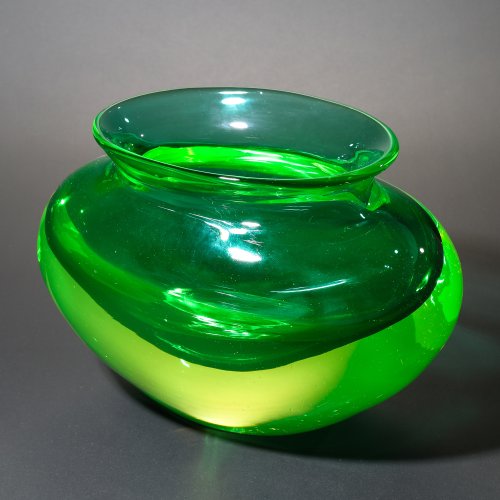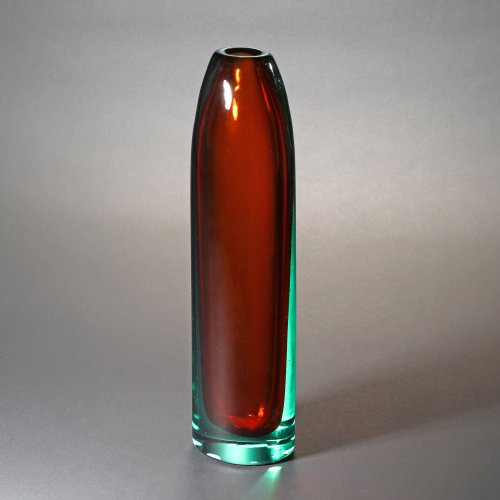Biography
"To give every modern ambience a typical physiognomy" was one of Flavio Poli's catchy theoretically formulated goals.
His concrete contribution to the aesthetic renewal of Italian households in the post-war years are glasses made of thick crystal glass in bright colors, which today are among the best-known classics of Muranese glass art. Formal parallels to works by Scandinavian glass artists have often been drawn, but there are no concrete models for Flavio Poli's works. The Italians admired Swedes like Vicke Lindstrand for their brilliant handling of colorless crystal glass, while the Scandinavians were enchanted by the lightness, the leggerezza and the understanding of color of the southerners. The exhibitions of the Venice Biennale and the Milan Triennale at the beginning of the 1950s enabled a lively exchange of information, which led to a mutual influence between the two glass art centers. In Sweden in particular, the possibilities explored by Flavio Poli were subsequently developed further and made available to a wider public in less sophisticated models. Flavio Poli's aim was, on the other hand, to create glasses in the quality of free artistic sculptures for an upscale clientele. The basis for his creative work were found objects from nature, such as shells. The surfaces of his strictly stylized vessels were to appear perfect in order to achieve maximum effect and were therefore often ground and molded again afterwards.
Little has been written about Flavio Poli's biography, although he was one of the most influential designers in Murano in the 1950s. Born in 1900 in Chioggia near Venice, he trained as a ceramist before turning to glass art. He showed the courage to innovate right from the start at his first job in the company of Libero Vitali and Giulio dall'Oglio I.V.A.M. (Industrie Vetri Artistici Murano). He expanded the traditional range of blown glasses and lamps by including stylized animal figures and classicist nudes. From 1932 to 1934 he was an artistic collaborator of the Compagnia di Venezia e Murano. In 1934 Poli joined Vetreria e Soffieria Barovier Seguso & Ferro, a new manufactory founded in 1933, and in 1937 he also became a partner in the company, which has since traded under the name Seguso Vetri d'Arte. With his designs, which were handcrafted by Archimede and Angelo Seguso, Falvio Poli quickly helped the young company to great success. At first he designed stylized small sculptures such as figurines of women and animals, in the mid-thirties rounded vessels with a rough surface, already anticipating the forms of the fifties. This was followed in the forties by large-scale ceiling lights made of horizontal, amoeba-shaped discs. In the fifties, Poli developed the Sommersi series, for which he was awarded the Compasso d'Oro at the Milan Triennale in 1954. Thanks to the great response, these continued to be produced even after he left the company in 1963.
Read more ...Read less ...
Objects by Flavio Poli


